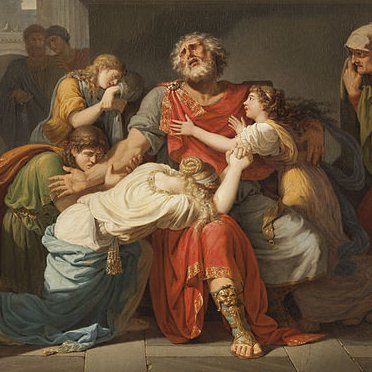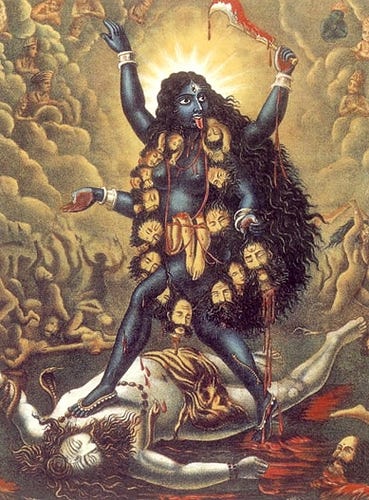The following is an expanded and modified excerpt on the myth of Oedipus, taken from my book The Saffron Tiger: Kundalini Awakening, Carl Jung & The DMT Mystery, which utilizes comparative mythology and Jungian psychology to understand the stages of spiritual awakening, told through the lens of a personal story. To purchase the book, please use the links below:
The Myth of Oedipus
In the ancient Greek myth of Oedipus, King Laius of Thebes receives a prophecy from the Oracle at Delphi that his future son will murder his father and marry his mother. King Laius proceeds to lock away his wife, Queen Jocasta, to prevent them from bearing offspring. Jocasta is unable to be stopped and successfully contrives a plan to intoxicate her husband and get pregnant. Once born, Laius orders Oedipus’ ankles to be pinned together, taken to the countryside and killed, desperately trying to prevent the Oracle’s prophecy from coming true.1
Oedipus is set free in the countryside by his reluctant killer and is raised in the foreign kingdom of Corinth by King Polybus. Due to his swollen ankles, he is named Oedipus. His name translates to “know where” or “swollen foot.” He spends his life walking with a limp and expresses a relentless desire to understand himself. Oedipus’ desire to understand his heritage leads him to the Oracle at Delphi, where he receives the same prophecy that he will murder his father and marry his mother, so he leaves the city to protect his adopted father, Polybus.
However, the prophecy comes true when Oedipus leaves Delphi and takes the road back to Thebes rather than Corinth. He unknowingly engages his biological father in a skirmish at the crossroads between kingdoms and kills him. He then finds his way back to his homeland of Thebes and solves the riddle of the Sphinx, who devours and kills anyone who answers the riddle incorrectly.
After Laius is killed, the Sphinx appears before Oedipus and delivers its riddle as follows: “What goes on four feet in the morning, two at midday, and three in the evening?” The Sphinx lets no one enter Thebes unless the riddle is answered correctly, which left the kingdom internally depleted in a trade deficit. Any culture or individual who is psychologically tormented by the Sphinx loses their spiritual energy to the world. They are vitally wounded by the mother complex, and until this archetypal wound is healed, they will move in the direction of self-destruction or by seeking their lost power in the external world.
The mother wound is a metaphysical hole in the gas can of the energetic aura of the human energy system, siphoning one’s fuel through the unconscious wound split off in the shadow. Oedipus correctly answers the riddle as a metaphor for human psychospiritual development or what Jung called individuation.
The Riddle of the Sphinx and Spiritual Emergency
The effect of the Sphinx’s riddle suggests that the mother complex is perhaps the biggest hindrance and compromising obstruction to psychological growth and spiritual development. However, like most things in relation to the psyche and consciousness, they relate to each other in paradox. It is often the severity of the mother wound that catalyzes a spiritual awakening. It seems the depth to which a person is affected by the negative aspect of the anima, the devouring mother archetype, correlates to the potential of one’s capacity to activate the positive and alternate expression of the anima: the Divine Mother, the Devi, Kundalini.
We can accurately describe Kundalini Awakening as an awakening of the anima archetype; with all its energetic potential, it brings about a second birth in a single lifetime from the womb of ordinary consciousness to the secret jungle of the divine. It brings awareness and an alchemical charge to not only the hidden wounds but also gives propulsive energy to the discovery and realization of our fullest potential as a human being.
In Homer’s The Odyssey, it is the goddess Athena who guides Telemachus, the son of Odysseus, to separate from his mother and venture out to sea to find word of his father’s whereabouts.2 This signifies that the positive side of the anima, the goddess who unfurls the golden sails, gives fuel and direction to the attainment and embodiment of the masculine image within the psyche. It also eludes to the sacred marriage, the archetype of the hieros gamos, which can only be achieved by participation and union of the feminine and masculine polarities.
The process of individuation and self-realization is an unconscious principle of human development, and the hieros gamos is the primary source code of the ocean voyage; the opposing poles are magnetized together, drawing themselves towards a centre. If we resist this process, the soul creates a fire in the kingdom to force an escape. In the modern era, we call this a “symptom.”
The suppression of the life force by the mother wound can cause an immense level of restrained volcanic pressure in the unconscious; the molten lava of Kundalini in the earth has nowhere to be directed but inwards against the self—festering, ever-expanding—we risk a complete eruption where fate unfolds in two directions: psychosis or spiritual awakening.
The Sphinx begets and gives birth to her divine counterpart in the Devi when there is nowhere else for the life force to flow but upwards and out of the earth. There is nothing left for the energy to do at this point but expand outwards and give birth to itself. This often results in a life-destroying psychosis or a life-bearing spiritual emergency, which is often improperly conflated with mental illness. The spiritual emergency, the Platonic “Divine Madness,” not only forces individuation by way of solving the Sphinx’s riddle but propels the psyche and consciousness into the strange and ineffable world of Kundalini Awakening, the divine path to self-realization. The Oedipal myth chooses a different ending and opens the pages of The Odyssey—the Hero’s Journey begins.
The Anima Archetype and Alchemy
The answer to the riddle refers to the developmental stages of the psyche, from childhood to old age, suggesting that the torment of the Sphinx is the unconscious attempting to push Oedipus to break away from his infantile chains and individuate. This is the psychological equivalent of a confrontation with the dark side of the anima archetype, the devouring mother who suffocates the growth of her children and the enduring forces of codependency and addiction that transfer into adulthood.
Answering the riddle frees Thebes from the torment of the Sphinx and allows Oedipus to proceed to individuate, but it is insufficient to free him from the allures and comforts of the womb. He answers the Sphinx correctly, for he knows in his soul what he must do to move forward, but he avoids the necessary task. It is possible that Oedipus is unwilling and avoidant, but it is also possible that he is incapable of the alchemical mandate.
In Psychology and Alchemy, Jung says that the difficult process of alchemy requires a high level of intelligence: “The importance and necessity of understanding and intelligence is insisted upon all through the literature, not only because intelligence above the ordinary is needed in the performance of so difficult a work, but it is assumed that a species of magical power capable of transforming even brute matter dwells in the human mind.”3
Jung is referring to the power of the life force, the Kundalini, as the fundamental and divine energy of consciousness, which feels magical to those who uncover it and provides the hidden force required for transformation and alchemy. However, the inner gold is only achieved and materializes in the psyche if the alchemist can impress upon the chaos of the unconscious—prima materia—a structured form of order, understanding, and integration which requires a high degree of perception and intellect. But also a willingness to turn towards the pain of our wounds and commit to the difficult task of the work—the opus.
If an incapable or immature individual summons the power of Kundalini, things can go wrong in ways that can not be fixed. The intellect is unable to impose structure on the erupting chaos, so the individual will have no choice but to enact the Oedipal fate, blinding themselves with a needle. They are unwilling or unable to confront the images of the shadow where the mother wound resides. Unfortunately, the gold of the alchemist remains a hidden and elusive treasure, leaving the desirous spiritual youth ruined and disordered.
Oedipus vs. Odysseus
Oedipus must separate from his mother by activating the positive side of the anima within himself—the guiding goddess Athena. He must wake up by cultivating the unconscious and healing his wounds rather than falling into the temptation of absorption. He is offered the hand of the Queen of Thebes in marriage as a reward for freeing them from the Sphinx’s riddle, and he fatally accepts the offer. After several children are born, he then seeks the wisdom of Tiresias, the blind prophet of Thebes, to understand his past.
Tiresias reveals the horrible truth that Oedipus’ wife is actually his mother. Upon realization, the damage his fixation to his mother has enacted on his life is revealed and appears insurmountable. He is driven to madness, blinding himself with a needle to avoid the reality of his inbred children and wasted life. In Homer’s version of the myth, Oedipus stays in Thebes and continues to rule. In another version, he leaves town and wanders through life blind with his daughter-sister Antigone.
In Homer’s The Odyssey and the myth of Oedipus, both of the central characters meet the blind seer Tiresias in the unconscious—the domain of the underworld—whose function is to provoke and guide us on our journey of coming to consciousness. The point is to separate from the wounded influence of our mother and father and connect to the inner wisdom and guidance of Tiresias within us all. The encounter with the archetype of “the wise old man” within the psyche blinds and destroys Oedipus. He desperately wants to understand himself but is unwilling to take responsibility for his past actions and future growth.
To the great warrior Odysseus, the same encounter bestows a path home from the Trojan War and ends in self-realization. The power of the unconscious—the coiled serpent—is a poison or a saviour to the one who brandishes the cobra. In myth and life, fate begets tragedy by avoiding the necessary task, but fate also begets a favourable destiny through willingness and competence to walk the serpent’s emerald path.
The Eternal Child and The “Red Pill” of The Matrix
The psyche must be willing but also capable of holding the power of an encounter with the unconscious and to witness the truth of one’s tarnished past. Blindsided by the breadth of their heinousness should the seer give them sight, waking up is a curse to the wicked and the eternal child—puer aeternus. The “eternal boy” is revoked from his plastic throne and descends to the hell of his avoided reality, fractured from his segregated life of boyish foolishness, when he provokes the wild cobra to rise within his psyche.
Awakening will be a nightmare; the screen will read “game-over,” but he cannot restart the console of his former avoidant life. His childlike ego will die the most wretched and horrible death imaginable; he is likely to go completely mad, but it is the opposite of insanity to see the truth of our blinded existence in the depths. If he heeds the call of the Hero, he has a glimmering chance of reclaiming the aims of life. But this will take every ounce of his hidden manhood, which allures him to life from the shadows. The repressed life force of the unlived man may appear in a vision as a rabid and malnourished dog left outside in the winter to die; the boy must bring into his house and give life and nourishment to what appears to be a disgusting animal.
Imagine if Neo, the protagonist in the film The Matrix, took the “blue pill” when he met Morpheus instead of the “red pill,” which awakened Kundalini and sprung him from ignorance. It would result in a sad and terrible story unfit for the heroic tales made in Hollywood that touch our yearning souls, better made for a boring and tragic drug-riddled street corner. This is the story of Oedipus; he fills the beckoning rabbit hole with dirt, covering the face of Tiresias, the equivalent to the great Morpheus, and goes back to sleep in his mother’s basement.
He defers the pain of waking up and becoming a man in exchange for temporary comfort, the allures of the material world and the promise of self-destruction. He seals his fate, the letter of his life written in myth, with the most addictive substance of them all: avoidance. This is contrary to the story of the Buddha, who leaves the comforts of his family’s palace to seek enlightenment. He must take the “Red Pill,” follow the White Rabbit down the portal of entry to the unconscious, and slay the fire-breathing dragon.
Attempting to avoid the unavoidable inner journey of the Hero cements the coming prophecy of Oedipus’ looming and foreseeable fate of self-destruction. The blinding of our vision with the needle of Oedipus is inherited by our children when we abandon them to protect the rotting “kingdom” of our damaged inner world from crumbling. We must overcome our natural tendency to turn away from the unconscious and be willing to individuate at any cost of exposure to the truth.
The “Wise Old Man” Named Tiresias
In Homer’s The Odyssey, an alternate ending is imagined for the warrior Odysseus because he does more than just question Tiresias, knowing that his journey home from the Trojan War at this point is only “half-baked.” Merely activating the unconscious, revealing our origins and making direct contact with the “wise old man” is insufficient to consummate the journey—the Hero must depart Thebes and his mother, a metaphor for the comforts of the tribe, and set out for the open ocean.
He must become the tall poppy—the strange flower—the “weed” to the monotonous mass of the sleeping populous that values the uniformity of the manicured hedge and not the wild animals who roam outside the fence line.
Both men question Tiresias, who reveals the nature of their past and the pathway home, but only Odysseus heeds the call. He chooses to become the alchemist, while Oedipus chooses his addictions, a lofty goal or an equivalent distraction that provides false comfort. The half-developed man may find gold in the material world, but like the similar myth of Midas, the external items he turns to gold cannot be consumed, so it fails to fill the void in his yearning heart, and his soul becomes malnourished. The alchemist makes gold from his inner contents, a fortune that begets itself from darkness and fuels the luminous soul over the vastness of the ocean—the unconscious expedition.
We would rather blind ourselves—a metaphor for unconsciousness—and cling to the power of status because the path of individuation involves sacrificing the false image of ourselves—the image constructed by the ego whose fortified walls banish all threats of invasion from the unconscious. The prophecy is mutable, but only if the kingdom of the psyche is revolutionized. Only if we surrender to the unpredictable winds of the anemoi, which guided the Greek warriors home from Troy, and build the sturdy battleship, the “Man-of-War,” do we set ourselves out to sea. Only then will we find home at last on the sandy shores of Ithaca, the motherland of Odysseus. The Great Mother lives hidden in our hearts and in the earth, who births us and calls us home to union.
Written by Nicholas Brethour; modified excerpt from The Saffron Tiger
If you’d like to learn more about the process of Kundalini Awakening from a Jungian and mythological perspective, you can purchase my book in paperback on Amazon or in eBook format using the links below:
- Marks-Tarlow, T. (n.d.). Riddle of the Sphinx: Paradox Revealed and Reveiled. Omnilogos. https://omnilogos.com/riddle-of-sphinx-paradox-revealed-and-reveiled/ ↩︎
- Homer (1996). The Odyssey (R. Fagles, Trans.). Penguin Classics. ↩︎
- Jung, C. G. (1953). Psychology and Alchemy (2nd ed., p. 260). Princeton University Press. ↩︎


